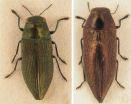(Press-News.org) After living incognito for millions of years in a remote area of a forested mountain range in the Philippines, seven newfound species of mice owe their recent discovery to DNA evidence and the Florida State University biologist who deciphered it.
What's more, the DNA drawn from the reclusive "new" mammals told FSU Associate Professor Scott J. Steppan an unusual evolutionary story. As he analyzed and compared the genetic codes of mice found in separate but proximate parts of a small area on Luzon, the largest Philippine island, he determined that while each mouse was a distinct species, they all belonged to the forest-mouse genus Apomys. That meant all seven mice were both "new" and closely related to one another.
"It is extraordinary, really almost unprecedented, to have so many closely related mammal species from such a small area that forms just one-half of one island –– let alone to have discovered so many so quickly," said Steppan, whose laboratory at Florida State coordinates the DNA sequencing portion of an ongoing biodiversity project led by Chicago's Field Museum of Natural History.
Part of an international team of biologists collaborating on the project, Steppan and colleagues from the United States and the Philippines describe the newly discovered species in Fieldiana (http://www.bioone.org/doi/abs/10.3158/2158-5520-2.1.1), the Field Museum's peer-reviewed journal.
"The Apomys genus is the product of millions of years of evolution in the Philippine archipelago," Steppan said, "but it also shows how very fast the process of evolution has been operating there, in terms of creating new species. Such cases of rapid diversification are useful examples to help us understand the origin of biodiversity in general."
Steppan's identification of the mice has made a marked difference in the number of mammal species (excluding bats) now known to be native to Luzon, increasing the current, official total by about 17 percent, from 42 to 49.
He said that, while the new Apomys species may have been elusive until now, they aren't rare. Rather, some are among the most abundant mammals in their respective forests and, as such, are vital to the local ecosystem, which acts as a watershed for the human communities. The seed- and earthworm-eating mice were hard to find primarily because of their extremely limited geographic ranges.
Unfortunately, their limited ranges make them susceptible to extinction from deforestation, a major problem in the Philippines and other tropical regions. That vulnerability concerns scientists because the animals are a key part of the Philippines' rich biodiversity.
And when it comes to biodiversity, Steppan said not even famous island chains such as the Galapagos Islands can trump the Philippines –– which, relative to its size, encompasses the Earth's greatest concentration of unique species of animals.
In fact, he believes there's no end to the discoveries that await biologists there.
In the past decade alone, colleagues of Steppan's have identified a total of 10 newfound mammal species in the Philippines, while other scientists have described five more.
Soon the list may grow even longer. Steppan recently led new DNA studies that have produced promising, though not-yet-published, results.
INFORMATION:
In addition to Steppan of Florida State, co-authors of the current Fieldiana paper include project leader Lawrence Heaney of the Field Museum and researchers from the University of the Philippines; the Philippine National Museum; Conservation International-Philippines; and the Utah Museum of Natural History.
A Florida State University undergraduate researcher also played a significant role. Steppan credits then-FSU student Lawren VandeVrede for much of the Apomys DNA sequencing performed in his laboratory. VandeVrede is now pursuing both a medical and a doctoral degree at the University of Illinois-Chicago.
Visit the FSU Department of Biological Science website (http://www.bio.fsu.edu/steppan/) to learn more about Steppan's research.
DNA decoded by FSU biologist reveals 7 new mice species
International team's discovery in Philippines showcases biodiversity, evolutionary wonders
2011-07-08
ELSE PRESS RELEASES FROM THIS DATE:
Research shows generic medications are changing the economics of treating chronically ill patients
2011-07-08
WOONSOCKET, R.I. – July 7, 2011 – As the nation seeks to expand health care coverage to more citizens without adding burdensome costs, researchers from Harvard University, Brigham and Women's Hospital and CVS Caremark reported that preventative health care may be significantly less costly than previously thought, due to expanded use of cost-effective generic medications for the treatment and prevention of chronic disease.
A study released today in the July issue of Health Affairs concludes that preventive health care is considerably less costly than previous industry ...
NIST prototype 'optics table on a chip' places microwave photon in 2 colors at once
2011-07-08
Researchers at the National Institute of Standards and Technology (NIST) have created a tunable superconducting circuit on a chip that can place a single microwave photon (particle of light) in two frequencies, or colors, at the same time.
This curious "superposition," a hallmark of the quantum world, is a chip-scale, microwave version of a common optics experiment in which a device called a beam-splitter sends a photon into either of two possible paths across a table of lasers, lenses and mirrors. The new NIST circuit can be used to create and manipulate different quantum ...
California groundwater management trickles up from local sources
2011-07-08
In a typical year, California gets about 30 percent of its water from groundwater wells. Yet when it comes to managing this precious resource, the state of California relies on a mixed bag of more than 2,000 local water agencies with varying degrees of authority.
Critics say that this decentralized system leaves the state vulnerable to overdraft, which occurs when water is pumped out faster than replacement water is absorbed. But according to a new report published by Stanford University's Program on Water in the West, a surprising number of local water districts are ...
Graphene: What can go wrong? new studies point to wrinkles, process contaminants
2011-07-08
Using a combination of sophisticated computer modeling and advanced materials analysis techniques at synchrotron laboratories, a research team led by the University at Buffalo (UB) and including the National Institute of Standards and Technology (NIST), the Molecular Foundry at Lawrence Berkeley National Laboratory and SEMATECH* has demonstrated how some relatively simple processing flaws can seriously degrade the otherwise near-magical electronic properties of graphene.
Their new paper** demonstrates how both wrinkles in the graphene sheet and/or chance contaminants ...
Promising fire retardant results when clay nanofiller has space
2011-07-08
If materials scientists accompanied their research with theme songs, a team from the National Institute of Standards and Technology (NIST) and the University of Maryland (UMD) might be tempted to choose the garage punk song "Don't Crowd Me"* as the anthem for the promising, but still experimental nanocomposite fire retardants they are studying.
That's because the collaborators have demonstrated that the more widely and uniformly dispersed nanoscale plates of clay are in a polymer, the more fire protection the nanocomposite material provides.
Writing in the journal Polymer,** ...
Study suggests new strategy to prevent infertility, birth defects
2011-07-08
A strategy that has been shown to reduce age-related health problems in several animal studies may also combat a major cause of age-associated infertility and birth defects. Investigators from Massachusetts General Hospital (MGH) have shown that restricting the caloric intake of adult female mice prevents a spectrum of abnormalities, such as extra or missing copies of chromosomes, that arise more frequently in egg cells of aging female mammals. Their report appears in this week's online Early Edition of the Proceedings of the National Academy of Sciences USA.
"We found ...
The Brava System: How Does it Work?
2011-07-08
Brava breast enhancement is a clinically proven, nonsurgical method for enlarging your breasts. Brava utilizes tissue expansion, a method for enabling your body to grow extra skin tissue.
Brava consists of two domes with silicone gel rims that are worn over the breasts and held in place with a sports bra. A battery-powered microcomputer called a SmartBox creates and regulates a light vacuum within the domes.
This gentle tension within the domes stimulates tissue cells, causing them to multiply and generate new breast tissue. As new tissue develops, your breast size ...
Jewel beetles, obtained from local people, turn out to be 4 species unknown to science
2011-07-08
A team of researchers from the Czech University of Life Sciences discovered four new species of jewel beetles (Buprestidae) from South-eastern Asia. This family of beetles is named for their particularly beautiful body and fascinating, shiny colours.
"All new species belong to the genus Philanthaxia. Before the publication of this study, 61 species had been known from this genus. Currently, it comprises of 65 species, with a primarily Southeast-Asian distribution, except for two species extending to the Australasian region", said Oto Nakládal, a co-author of the study.
The ...
In a Car Wreck? Use the Ferrer Shane Accident Toolkit iPhone App
2011-07-08
In a world - a mobile world - where the words "cool" and "useful" are the primary ways to describe smartphone apps worth buying, apps provided by law firms have very seldom been described as cool or useful.
Will the Accident Toolkit, sponsored by the Miami personal injury lawyers of Ferrer Shane, be any different?
It actually might.
Many commentators have stated that lawyers' smartphone apps are just another marketing gimmick and will do very little to attract consumer interest, especially when it comes to those apps that are likely to be ...
Organizational climate drives commercialization of scientific and engineering discoveries
2011-07-08
WACO, Texas (July 7, 2011) – Research universities with an organizational climate that actively supports commercialization and encourages interdisciplinary collaboration among researchers are more likely to produce invention disclosures and patent applications, according to a Baylor University study.
Published online June 29 in the Journal of Research Policy, the study by Emily Hunter, Ph.D., assistant professor of management and entrepreneurship at Baylor University's Hankamer School of Business, showed that a favorable organizational climate had a sizeable and direct ...
LAST 30 PRESS RELEASES:
Chicago health information leader recognized for raising CPR readiness and blood pressure awareness
The Intimate Animal, a new book from Kinsey Institute Executive Director Dr. Justin Garcia
When blue-collar workers lose union protection, they try self-employment
New video dataset to advance AI for health care
MEA-based graph deviation network for early autism syndrome signatures in human forebrain organoids
New modeling approach sheds light on rare gut disease
Study documents potentially hazardous flame retardants in firefighter gear
Can certain bacteria regulate aging of the immune system and its related alterations?
AI model helps diagnose often undetected heart disease from simple EKG
There are fewer online trolls than people think
Cell membrane fluctuations produce electricity
Jeonbuk National University study shows positive parenting can protect adolescents against self-harm
Surface-engineered ZnO nanocrystals to tackle perfluoroalkyl substance contamination
This new understanding of T cell receptors may improve cancer immunotherapies
A new fossil face sheds light on early migrations of ancient human ancestor
A new immunotherapy approach could work for many types of cancer
A new way to diagnose deadly lung infections and save lives
40 percent of MRI signals do not correspond to actual brain activity
How brain-inspired algorithms could drive down AI energy costs
Gum disease may be linked to plaque buildup in arteries, higher risk of major CVD events
Contrails are a major driver of aviation’s climate impact
Structure of dopamine-releasing neurons relates to the type of circuits they form for smell-processing
Reducing social isolation protects the brain in later life
Keeping the heart healthy increases longevity even after cancer
Young adults commonly mix cannabis with nicotine and tobacco
Comprehensive review illuminates tau protein's dual nature in brain health, disease, and emerging psychiatric connections
Book prepares K-12 leaders for the next public health crisis
Storms in the Southern Ocean mitigates global warming
Seals on the move: Research reveals key data for offshore development and international ecology
Sports injuries sustained during your period might be more severe
[Press-News.org] DNA decoded by FSU biologist reveals 7 new mice speciesInternational team's discovery in Philippines showcases biodiversity, evolutionary wonders



